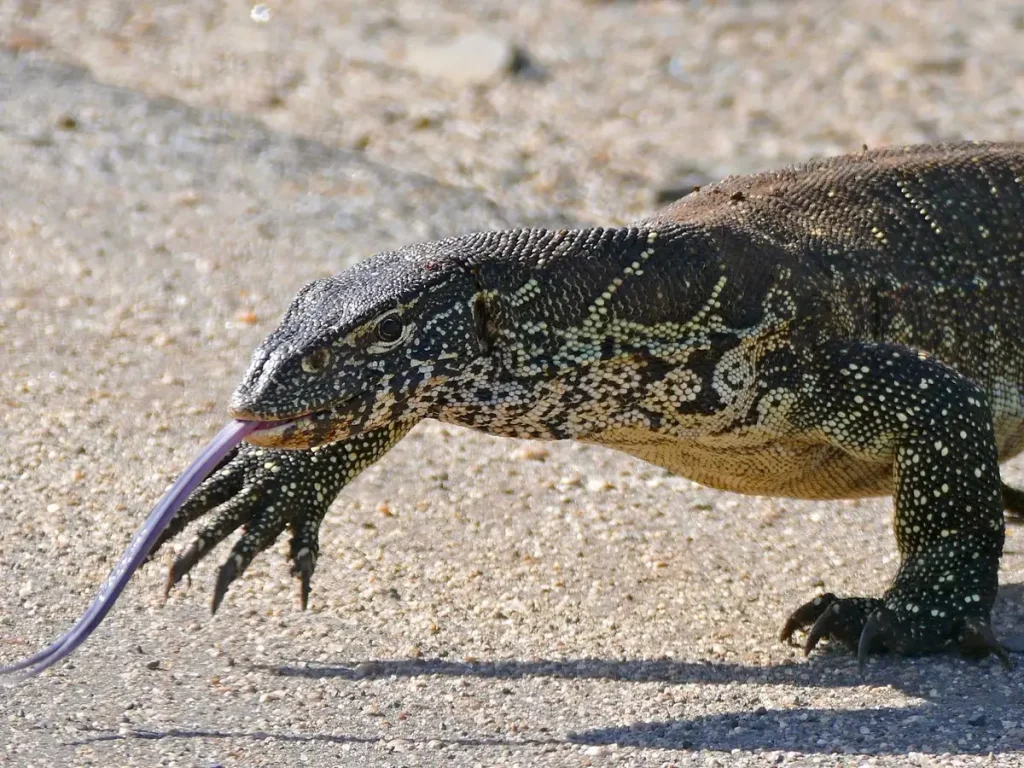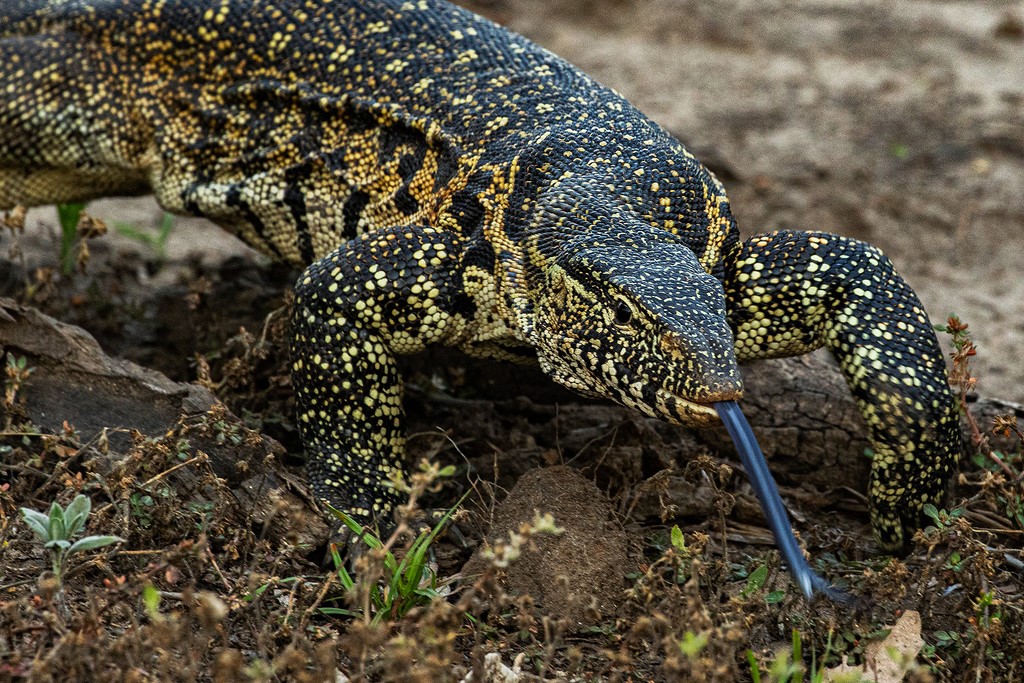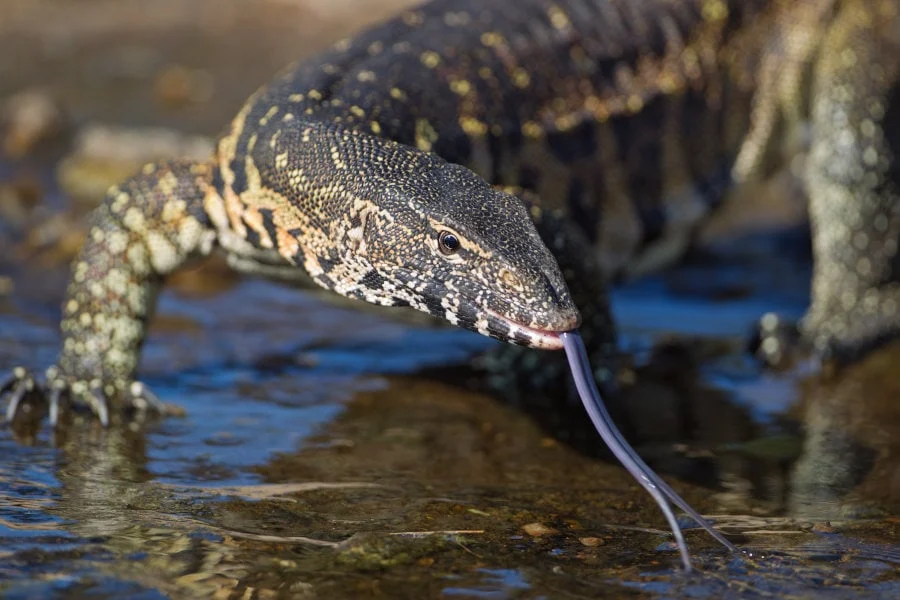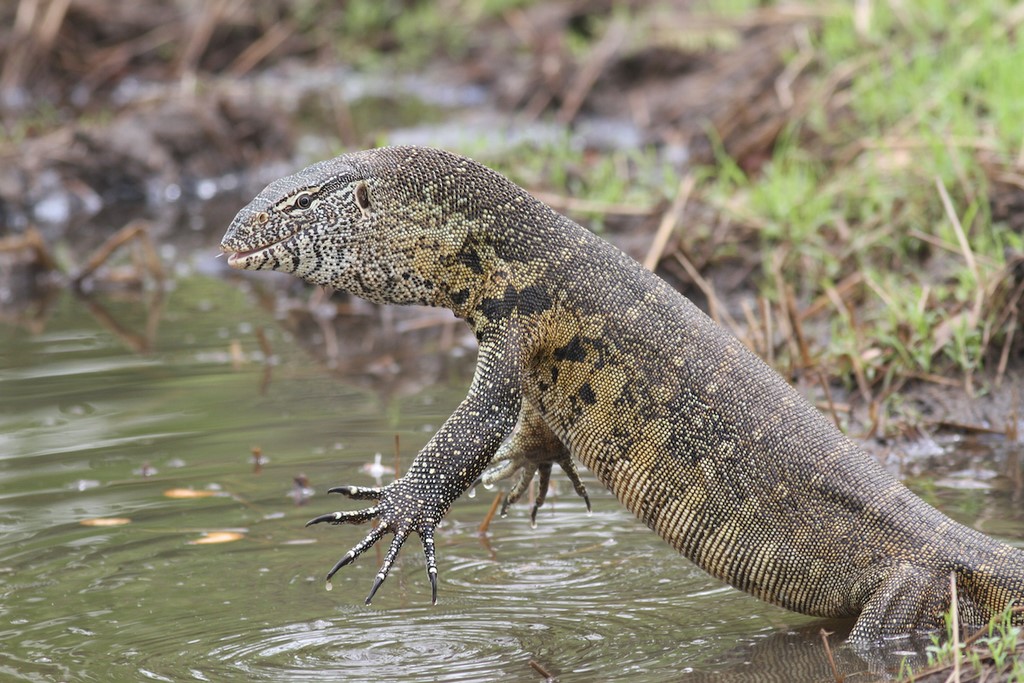
The Nile Monitor (Varanus niloticus) is one of Africa’s most impressive and versatile reptiles, found throughout the African continent, particularly in wetland and river environments. Known for its long, powerful tail, sharp claws, and muscular build, the Nile Monitor is an apex predator and a formidable presence in its ecosystem. Whether it is hunting for food, defending itself against threats, or navigating the waters, the Nile Monitor is a fascinating creature with many incredible traits.
In this article, we will explore 5 fascinating facts about the Nile Monitor, highlighting its physical attributes, behavior, hunting techniques, and role in the environment. These facts will give you a deeper understanding of why the Nile Monitor is not only an essential part of its ecosystem but also an intriguing animal in the world of reptiles.
1. The Nile Monitor is an Apex Predator

One of the most exciting facts about the Nile Monitor is its status as an apex predator in its environment. The Nile Monitor is a carnivore, and its diet consists of a wide range of animals. From small mammals to fish, birds, and even crocodile eggs, the Nile Monitor is a versatile and efficient hunter. The size, speed and strength of the reptile make it one of the most powerful predators in areas where they can be found. The Nile Monitor has a muscular body, which allows it to overpower prey, whether on land or in water. Its sharp claws are useful when the reptile digs or burrows out prey or when the reptile catches fish in the water.
Nile Monitors are known to be excellent swimmers, and they often hunt in rivers, lakes, and marshes where they can easily access aquatic animals like fish and frogs. They are also good climbers who can hunt birds in trees or on cliffs, as well as their eggs. Due to their remarkable hunting skills, Nile Monitors have earned a reputation as opportunistic predators. They will consume anything that they find available, including carrion. This flexibility in their diets has made them very successful in their habitats and they are considered apex predators that help in ensuring there is a balance in their respective ecosystems.
2. Nile Monitors Are Exceptional Swimmers

Another remarkable aspect of the Nile Monitor’s behavior is its exceptional swimming ability. The Nile Monitor is closely associated with water, and it is often found in wetlands, rivers, lakes, and other bodies of water. This is not surprising, given that the Nile Monitor is one of the most proficient swimmers among reptiles. With powerful limbs and webbed feet, the Nile Monitor is perfectly adapted to life in the water. These are modifications that enable the reptile to travel swiftly and effectively through water. The Nile Monitor uses its long tail as a rudder to help steer and stabilize itself while swimming. This caudal fin that measures to as much as one meter long is a vital instrument of locomotion whereby the monitor is able to move rapidly through the water.
The ability to swim provides the Nile Monitor with numerous advantages in its quest for food. It is able to prey on water running animals like fish, amphibians, and even crocodile or other reptiles eggs. In fact, the Nile Monitor has a particular affinity for crocodile nests and will frequently raid them for eggs, despite the risks posed by adult crocodiles. This behavior further highlights the Nile Monitor’s status as an apex predator. Additionally, Nile Monitors are capable of diving underwater to catch prey or to evade predators. They are really great at hunting in the water, as they are able to keep their breath under the water for a couple of minutes.
3. The Nile Monitor Has a Highly Developed Senses

A crucial factor in the Nile Monitor’s success as a predator is its highly developed senses, particularly its sense of sight and smell. These enhanced senses allow the Nile Monitor to locate prey and detect potential threats quickly. The Nile Monitor’s keen eyesight is one of its most significant assets. It can see very well, particularly in dim light, enabling it to detect prey items or enemies long before it is close to them. Its monitor eyes are located on the sides of its forehead, which gives it a broad sight. This gives the Nile Monitor the ability to detect movement even when it is not looking directly at its target. The monitor can also see in color, and this gives it the ability to distinguish various things and animals in its vicinity.
In addition to its sharp eyesight, the Nile Monitor has an impressive sense of smell. The reptile springs forward and uses its forked tongue to collect smells in the air. It is whereby the tongue is inserted into the so-called Jacobsen organ, which resides in the roof of the mouth. This organ allows the Nile Monitor to process smells, helping it to locate prey, find mates, and identify potential dangers in its surroundings. This combination of exceptional vision and an acute sense of smell makes the Nile Monitor a highly efficient and successful predator. The Nile Monitor’s ability to detect scents from long distances also plays a critical role in territorial behavior. Male Nile Monitors use their sense of smell to identify the scent markings of other Nile Monitors, particularly females. This assists them in identifying potential mates and preventing tussle with fellow males within their territory.
4. The Nile Monitor Is an Important Scavenger

While the Nile Monitor is primarily known as an active predator, it also plays an important role as a scavenger in its ecosystem. Monitor does not feed exclusively on live prey it may consume carrion (dead animals) given a chance. This scavenging behavior helps the Nile Monitor maintain a balanced diet and contributes to the overall health of its environment. Scavenging also helps the Nile Monitor reduce the number of decomposing bodies in its habitat. It can feed on carcasses, aiding in the breakdown of organic material and recycling nutrients into the environment. In this way, the Nile Monitor performs an essential ecological service by contributing to the process of decomposition and nutrient cycling.
In addition to scavenging on land, the Nile Monitor may also feed on dead fish or other aquatic animals that have washed up on the shore. This behavior further demonstrates the versatility and adaptability of the Nile Monitor as a predator and scavenger.
5. Nile Monitors Can Live for Several Decades

One of the more fascinating facts about the Nile Monitor is its long lifespan. Nile Monitors can live for a significant amount of time in the wild, with an average lifespan of 10 to 20 years. In captivity, some Nile Monitors have been known to live even longer, with reports of individuals reaching up to 25 years of age.
The Nile Monitor’s longevity is partly due to its adaptability and ability to thrive in a variety of environments. The variety in its food, including both living food (prey) and rotten food (carrion) gives it a steady supply of food. The Nile Monitor’s ability to swim, climb, and navigate different habitats also increases its chances of survival, as it can escape from potential predators and move between various food sources. Despite their impressive lifespan, Nile Monitors face several threats in the wild. Bush meat has contributed to population decay due to deforestation, human-wildlife conflict and pet trade. However, the Nile Monitor remains relatively widespread and is classified as Least Concern by the International Union for Conservation of Nature (IUCN), although conservation efforts are still important to ensure that these reptiles continue to thrive.
Conclusion
The Nile Monitor is an incredibly adaptable and fascinating reptile that has earned its place as one of Africa’s most impressive predators. From its ability to swim and hunt with precision to its highly developed senses and long lifespan, the Nile Monitor is truly an apex predator that excels in its environment. Whether it is raiding crocodile nests, swimming through rivers, or scavenging for food, the Nile Monitor plays a crucial role in its ecosystem, helping to maintain balance and contribute to nutrient cycling. By understanding 5 fascinating facts about the Nile Monitor, we can appreciate the unique characteristics that make this reptile one of Africa’s most remarkable creatures. As we learn more and preserves such great animals, we master more of the wildlife that exists in the African continent, which is so diverse and complex. The Nile Monitor serves as a reminder of the power of nature and the extraordinary adaptations that enable species to survive and thrive in challenging environments.






